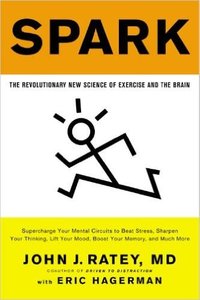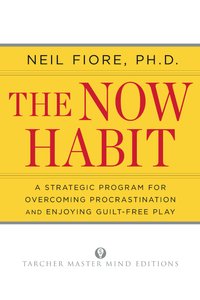Insights from the book ‘Spark: The Revolutionary New Science of Exercise and the Brain‘ by John J. Ratey, MD.
Time to read – 7:14 minutes
Need motivation to exercise?
Stop seeing exercise as something you do to build a better body. Start seeing exercise as something you do to build a better brain.
“Exercise cues the building blocks of learning in the brain; it affects mood, anxiety, and attention; it guards against stress and reverses some of the effects of aging in the brain.” – John J. Ratey, Spark
After reading ‘Spark’ by John J. Ratey I started seeing exercise as an essential component to optimizing my mental performance. This mindset shift had made me extremely motivated to exercise each and every day.
Why?
Our brains are everything. They dictate our moment-to-moment experience.
“It (your brain) is running the show. Right now the front of your brain is firing signals about what you’re reading, and how much of it you soak up has a lot to do with whether there is a proper balance of neurochemicals and growth factors to bind neurons together. Exercise has a documented, dramatic effect on these essential ingredients.” – John J. Ratey, Spark
A damaged brain can dramatically alter on ones life. There are many cases of head injuries that alter ones personality for the worse. There are approximately 44 million people who suffer from Alzheimer’s, a disease that erodes the brain and turns people into shells of their former selves.
If we don’t take care of our brains the quality of our life will suffer. Keeping your brain in optimal condition should be our primary goal.
Miracle-Gro for the Brain
When we exercise our bodies generates a protein called brain-derived neurotrophic factor (BDNF). Once released into the bloodstream it is brought into the brain and provides the building blocks for new neural connections.
“Early on, researchers found that if they sprinkled BDNF onto neurons in a petri dish, the cells automatically sprouted new branches, producing the same structural growth required for learning—and causing me to think of BDNF as Miracle-Gro for the brain.” – John J. Ratey, Spark
Think of BDNF as a spool of wire that an electrician can use to repair existing electrical connections or install new electrical connections throughout a building. BDNF is the raw material we need to build a better, more robust brain.
We can get BDNF in order ways (like intense study or deal with mild stress at work), but we don’t get the full benefits of BDNF unless we exercise.
“BDNF gathers in reserve pools near the synapses and is unleashed when we get our blood pumping.” – John J. Ratey, Spark
Exercise also releases hormones IGF-1, VEGF and FGF-2 that work in unison with BDNF to optimize neural growth in the brain.
“Exercise sparks the master molecule of the learning process” – John J. Ratey, Spark
Exercise as a Stress Healer
Exercise is a form of stress. Stress is known to break down our brain cells. However, because our brain receives a flood of BDNF post exercise, our cells have the opportunity to grow back stronger and more resilient.
“Toxic levels of stress erode the connections between the billions of nerve cells in the brain or that chronic depression shrinks certain areas of the brain…exercise unleashes a cascade of neurochemicals and growth factors that can reverse this process, physically bolstering the brain’s infrastructure.” – John J. Ratey, Spark
“Neurons get broken down and built up just like muscles—stressing them makes them more resilient. This is how exercise forces the body and mind to adapt.” – John J. Ratey, Spark
Those who experience chronic work stress are seen to have a shriveled hippocampus when viewed with a brain imaging machine. The hippocampus is a region of the brain strongly correlated to memory and creativity.
“Studies show that if researchers exercise rats that have been chronically stressed, that activity makes the hippocampus grow back to its preshriveled state. The mechanisms by which exercise changes how we think and feel are so much more effective than donuts, medicines, and wine.” – John J. Ratey, Spark
When we exercise we reverse the neurodegenerative effects of chronic stress and restore our brain base performance state.
Exercise For Innovation
The hippocampus brain region acts like a cartographer for the brain – linking new information to existing memories. By exercising we can grow new brain cells in the hippocampus region and increase our ability to connect novel ideas with existing ideas – the essence of creativity and innovation.
“If you have an important afternoon brainstorming session scheduled, going for a short, intense run during lunchtime is a smart idea.” – John J. Ratey, Spark
Good Mood Chemicals
Stress alters people’s mood for the worse. Stressed people are often temperamental, critical and angry. Aerobic exercise can reset our mood by restoring the neurotransmitters responsible for a happy and calm state of mind.
“Exercise increases levels of serotonin, norepinephrine, and dopamine—important neurotransmitters that traffic in thoughts and emotions.” – John J. Ratey, Spark
Startling Results
A 2007 study showed that when a group of adults tried learning a series of new vocabulary words before and after exercises they were able to recall words 20 percent faster after they exercised. Researchers noted that their rate of learning correlated directly with their levels of BDNF.
A 2009 study showed that kids who walked on a treadmill for 20 minutes at 60% of their maximum heart rate performed measurably better on an academic achievement exam compared to those who remained stationary.
In Naperville Illinois, schools have instituted mandatory morning gym class and observed remarkable academic results. In 1999, 97% of the eighth-grade students took a Trends in International Mathematics and Science Study (TIMSS) test and scored #1 in the world among 230,000 other kids in the science portion of the test (performing better than kids from Singapore and Japan).
These Naperville students take part in what is called ‘Zero Hour PE’. During ‘Zero Hour PE’ students are required to elevate their heart rates with basic aerobic exercises prior to attending their first class.
Prior to instituting mandatory ‘Zero Hour PE’, the Naperville school district compared two groups of student in the same literacy class on reading and comprehension. The students who elevated their heart rates above 80% of their max heart rate for a period of time prior to the literacy class had a 6.3% edge on reading and comprehension tests.
Initially, students at Naperville found the exercise to be annoying. Girls would complain about being smelly and gross. That soon changed. After interviewing and observing the students over a period of time, they found reported the following results:
“Their senses are heightened; their focus and mood are improved; they’re less fidgety and tense; and they feel more motivated and invigorated.” – John J. Ratey, Spark
A new stereotype is emerging in schools around the world: “the smart jock”. Students who are routinely active have are more likely to get a better grade if they put in the same study time as their non-active counterparts.
How Can I Get My Dose?
How can I get a healthy dose of this brain enhancing chemical – BDNF? What type of exercises should I do and how long should I do them for?
Here are a few clues:
- A 2007 experiment showed that one thirty-five-minute treadmill session at either 60 percent or 70 percent of maximum heart rate allowed forty adults (age fifty to sixty-four) to improve their processing speed and cognitive flexibility (they came up with more uses for a newspaper – fly swatter, umbrella, etc.).
- A small Japanese study found that jogging thirty minutes just two or three times a week for twelve weeks improved executive function.
- Studies show that mice who do acrobatics have 35% more brain cell growth in the motor control center of the brain (the cerebellum) and the mice who just ran.
Based on the data, we should do aerobic exercise the elevates our heart rate for a period of time (like running, swimming and biking), but also try to play a sport that requires hand-eye coordination in order to build other regions of the brain.
“Choose a sport that simultaneously taxes the cardiovascular system and the brain—tennis is a good example—or do a ten-minute aerobic warm-up before something nonaerobic and skill-based, such as rock climbing or balance drills. While aerobic exercise elevates neurotransmitters, creates new blood vessels that pipe in growth factors, and spawns new cells, complex activities put all that material to use by strengthening and expanding networks. The more complex the movements, the more complex the synaptic connections. And even though these circuits are created through movement, they can be recruited by other areas and used for thinking. This is why learning how to play the piano makes it easier for kids to learn math. The prefrontal cortex will co-opt the mental power of the physical skills and apply it to other situations.” – John J. Ratey, Spark
What Works For Me
I run or use the spin bike just before lunch for 15-20 minutes at 65-75% of my maximum heart rate. I find that this exercise regime keeps me focused and able to tackle difficult problems throughout the afternoon.
I avoid exercising above 75% of my max heart rate. When my heart rate goes higher than 75% of my max heart rate I enter the ‘anaerobic’ exercise zone. While in an ‘anaerobic’ zone I am unable to take in enough oxygen, I start breaking down muscle at an accelerate rate through the release of lactic acid and I burn through my glucose energy reserves (which causes added stress on my body). I find that I focus much better post exercise if the exercise kept me in a heart rate zone just below 75% of my max heart rate.
You can calculate your max heart rate by: 208 – (0.7)*current age (formula gathered from this study). Then use a heart rate monitor to track your heart rate while exercising.
If you don’t have a heart rate monitor don’t worry. You’ll know you are going into an anaerobic heart rate zone if you cannot maintain your pace by only inhaling and exhaling through your nose. The moment you need to open your mouth and gasp for more air you are going to hard.
Twice a week I’ll try to play a sport that combines aerobic activity with hand-eye coordination. My go-to sports are hockey and basketball.
Now that I know the power of exercise, I always schedule difficult work tasks after my exercise sessions.
The TAKEAWAY
“The body was designed to be pushed, and in pushing our bodies we push our brains too.” – John J. Ratey, Spark
Aerobic exercise releases large amounts of BDNF – a powerful brain drug.
- It accelerates learning and enhances creativity.
- It repairs brain regions damaged by chronic stress.
- It provides an optimal dose of serotonin, norepinephrine, and dopamine—important neurotransmitters that keep you focused and help you fight off depression.
“You have the power to change your brain. All you have to do is lace up your running shoes.” – John J. Ratey, Spark
What Now?
Go for a 20-minute run, bike or swim prior to starting a difficult work task or attending a critical brainstorming session.
On weekends engage in a sport that elevates your heart rate and involves complex movements. Give Yoga, Pilates, Soccer or Tennis a try. Your brain will thank you for it!

